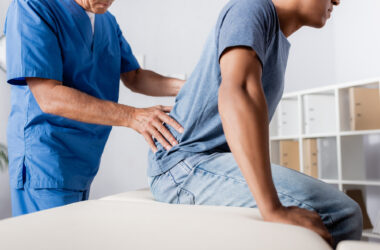Charlize Theron is a critically acclaimed actress known for her commitment to roles in movies such as Monster; Atomic Blonde; Mad Max Fury Road and more.
The South-African beauty is also an international philanthropist and mother of two children. Over her 20 year career, Charlize has completed a number of stunts as she often stars in action thrillers.
However, these stunts have caused her to have a number of injuries including severe back/neck troubles.
In the early 2000s while filming Aeon Flux, an action thriller, Theron slipped while conducting a stunt and landed on her neck.
She landed on her neck with the full weight of her body which caused a herniated disc between her third and fourth vertebrae.
Theron has shared publicly that the fall causes her entire right side of her body to go numb, signaling the severity of her injury.
This injury caused a stall in filming as Theron recovered.
She spent over five days in a German hospital and needed corrective back surgery (likely a laminotomy/laminectomy or discectomy/microdiscectomy) to address the herniated disc.
As part of her recovery, she used physiotherapy in addition to physical therapy. Unfortunately, Theron still experiences lingering side-effects from this +10 year-old injury.
Just earlier this month, it was reported that Theron triggered her previous injury by while watching her favorite comedy.
The herniated disc had returned and Charlize had to spend another five days in the hospital.
This injury and its reoccurring flare ups are definitely frustrating, but it’s not uncommon with an injury of this severity.
However, Theron maintains her active lifestyle and continues to find treatment that allows her to accept challenging roles.
Herniated disc can be caused by excessive strain or a single injury as seen with Charlize’s case.
Other times, the disc material degenerates naturally as one ages, and the ligaments that hold it in place begin to weaken.
When this happens even a relatively minor strain or twisting movement can cause a disc to rupture.










